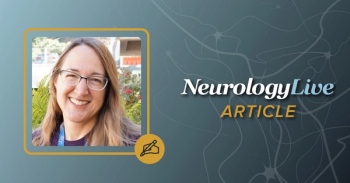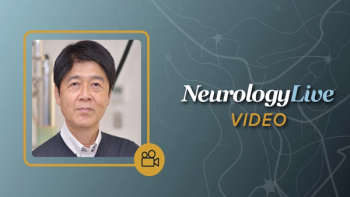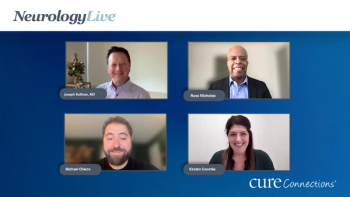
Nerivio Device Demonstrates Safety in Adolescent Migraine Treatment
In addition to the device showing a safe profile, it helped patients with pain relief from their migraine and increased functional ability.
Newly published results from a single-arm, multicenter study of adolescents aged 12 to 17 years with migraine revealed that treatment with the remote electrical neuromodulation (REN) device Nerivio (Theranica Bioelectronics) may be a safe and effective nonpharmacological alternative for acute treatment in this age subgroup.1,2
The study included 45 participants with episode and chronic migraine who completed a test treatment with REN. Investigators used safety and tolerability as the primary end point of the study and found there to be 1 device-related adverse event (AE; 2%) which was a temporary feeling of pain in the arm. There were no device-related serious AEs reported.
Secondary end points were related to device efficacy and included the proportion of participants who achieved pain relief and pain freedom at 2 hours post-treatment. In total, pain relief and pain freedom at 2 hours were achieved by 71% (28 of 39 participants) and 35% (14 of 39) of participants, respectively.
"Migraine in adolescents can cause significant disruptions in school attendance and social interactions," Andrew Hershey, MD, PhD, Endowed Chair and Director of Neurology, Cincinnati Children's Hospital Medical Center, and lead investigator of the study, said in a statement. "Current pharmacological treatments can be effective but are not always well tolerated, given their side effects. The possible addition of a drug-free treatment that is highly effective, and also safe and tolerable, will be an important option for patients, their families, and doctors looking to treat migraine for this age group."
READ MORE:
Hersey and colleagues treated 159 migraine headaches with the device over the course of the study, most of them either moderate (n = 78; 49%) or severe (n = 52; 33%) at baseline. Sustainability of pain relief and pain freedom for 24 hours was found in 90% of cases on the device.
At 2 hours, 69% (23 of 33) of participants experienced improvement in functional ability, defined by ability to do schoolwork and perform “usual activities.”
Researchers also assessed the effectiveness of Nerivio through the Pediatric Migraine Disability Assessment questionnaire, which asked patients how migraine interfered with school and daily activities. There was a decrease from 37.1 to 18.6 in the scores observed, indicating a reduction from moderate to mild disability.
Participants included in the study underwent a 4-week run-in phase, followed by an 8-week treatment phase with the device. Each participant was recorded on pain severity, associated symptoms, and functional disability at treatment initiation, and 2 and 24 hours post-treatment.
"We are extremely encouraged by the strong study results and look forward to working with the FDA towards expansion of the indications to include adolescent patients," said Alon Ironi, chief executive officer, Theranica, in a statement. "Migraine can often begin to manifest at an early age, which we all know to be a particularly vulnerable and important time in our lives. As adolescents embrace and are comfortable with new technology, we believe that our smartphone-controlled wearable may be a convenient treatment option for them.”
In October 2020, the company announced that
Each Nerivio device is good to use for 12 treatments, after which a newly dispensed device can be given to fill prescriptions. The device can be recycled upon the need to discard it. It is a smartphone-controlled electroceutical device that uses non-invasive neuromodulation to create a conditioned pain modulation response. The prescription device is self-applied to the upper-arm and is used in the home environment at the onset of migraine headache or aura. It gained
Patients can also access the migraine device through UpScript’s direct-to-platform telemedicine platform. Announced in April 2020, the platform helps save time and money for patients who have already been prescribed Nerivio by their doctors.4
REFERENCES
1. Theranica reports positive study results of Nerivio for adolescent migraine patients. News release. Theranica Biotherapeutics. December 22, 2020. Accessed January 4, 2021. https://www.prnewswire.com/news-releases/theranica-reports-positive-study-results-of-nerivio-for-adolescent-migraine-patients-301197453.html
2. Hershey AD, Lin T, Gruper Y, et al. Remote electrical neuromodulation for acute treatment of migraine in adolescents. Headache. Published online December 21, 2020. doi: 10.1111/head.14042
3. Nerivio receives clearance of expanded indication to cover chronic migraine patients. News release. Theranica Biotherapeutics. October 26, 2020. Accessed January 4, 2021. prnewswire.com/news-releases/nerivio-receives-clearance-of-expanded-indication-to-cover-chronic-migraine-patients-301159445.html
4. Theranica expands access to prescribed migraine wearable Nerivio through partnership with UpScript health telemedicine platform. News release. Theranica. April 6, 2020. Accessed January 4, 2021. prnewswire.com/news-releases/theranica-expands-access-to-prescribed-migraine-wearable-nerivio-through-partnership-with-upscript-health-telemedicine-platform-301035804.html
Newsletter
Keep your finger on the pulse of neurology—subscribe to NeurologyLive for expert interviews, new data, and breakthrough treatment updates.


























